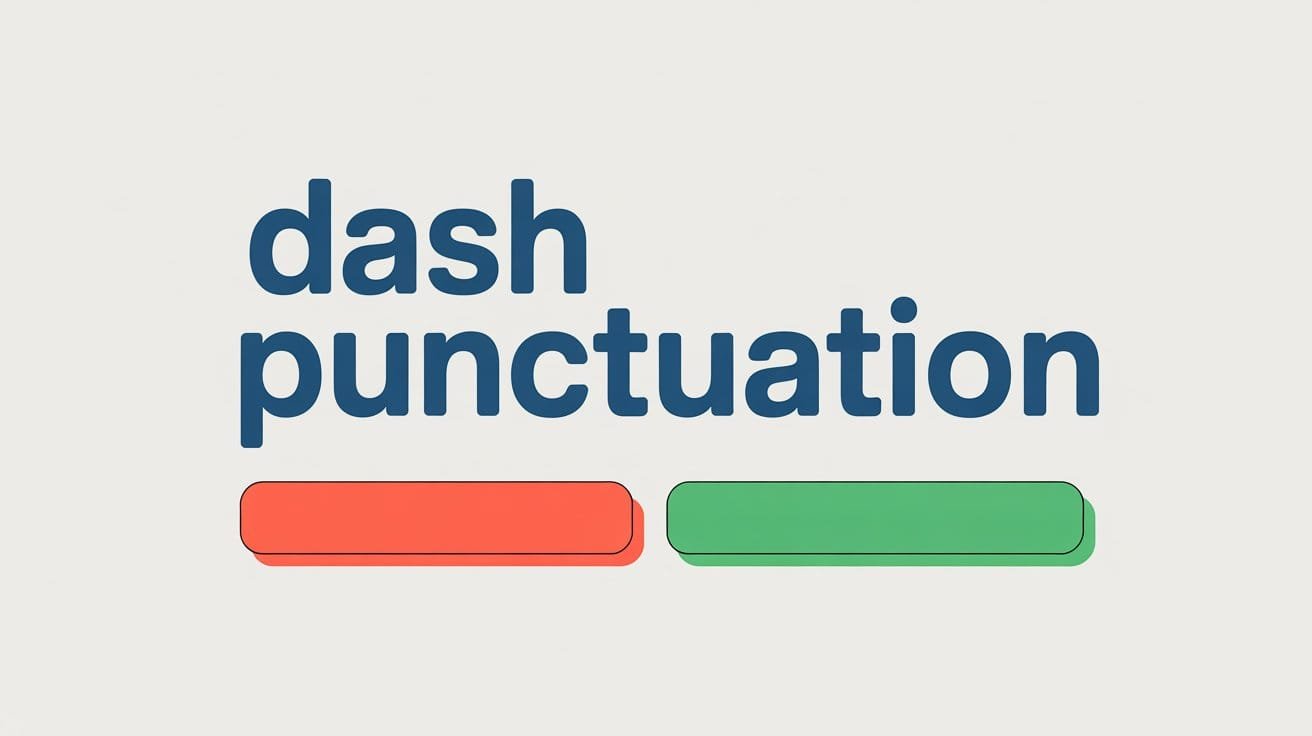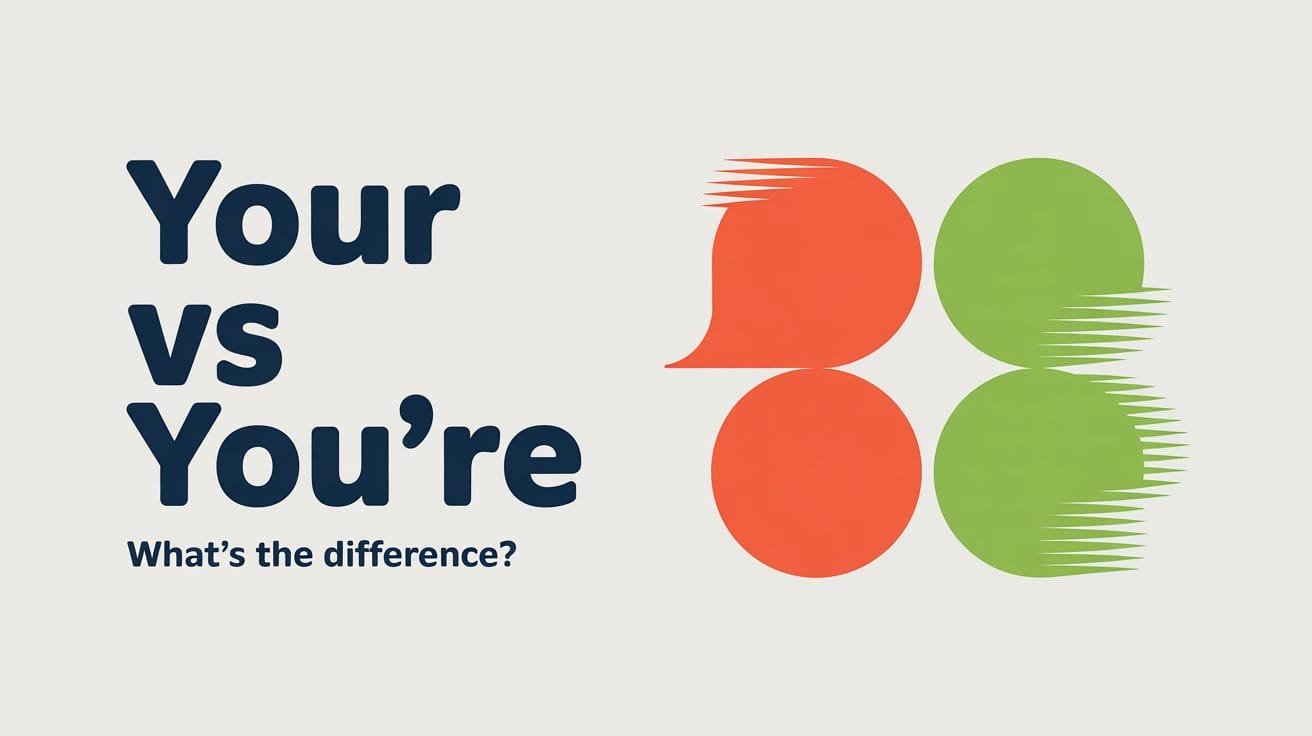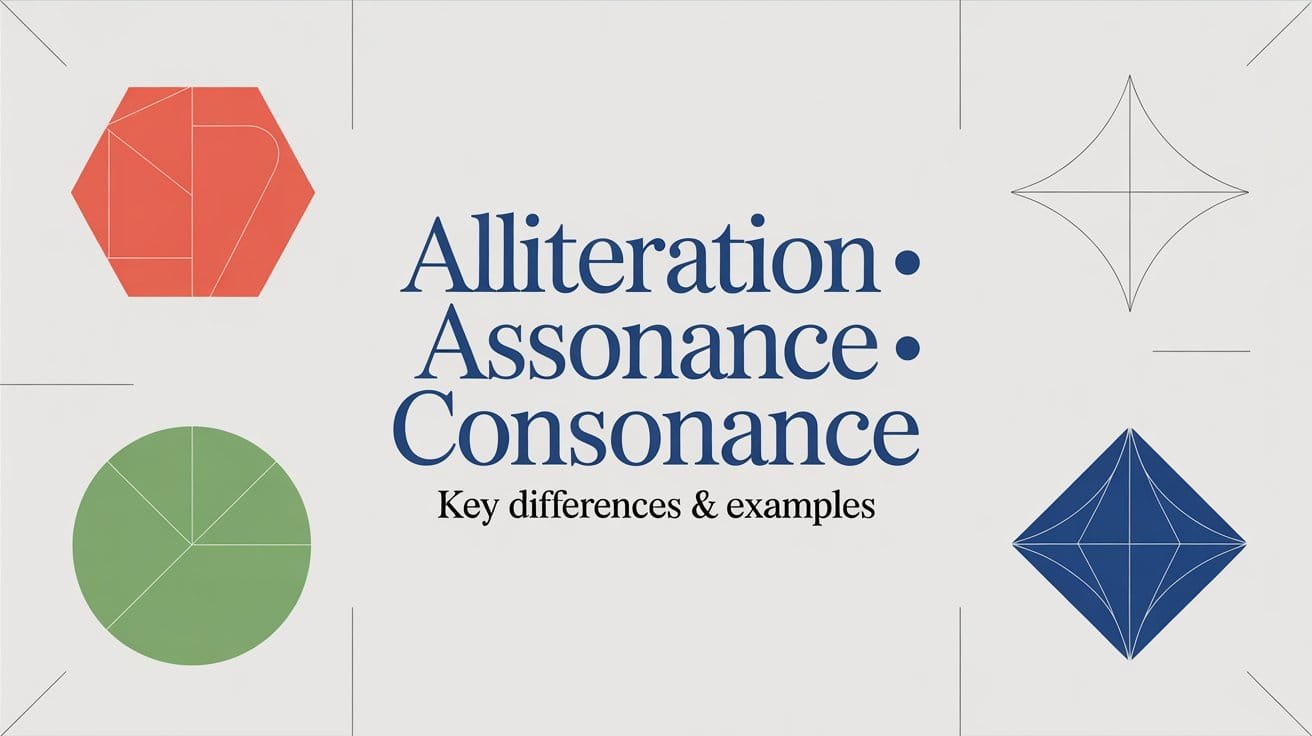The dash (— or –) can add emphasis, show interruption, or connect ideas more dynamically than commas or parentheses. But not all dashes are the same. English uses two main types: the en dash (–) and the em dash (—).
These two marks often get mistaken for each other or for the hyphen (-), even though they serve very different purposes. In this guide, you’ll learn what each dash means, how to use it, and how to avoid the most common mistakes
What Is a Dash in English Punctuation?
A dash is a punctuation mark used to separate, connect, or emphasize parts of a sentence. It’s longer than a hyphen and adds more visual impact, often guiding the reader’s attention or showing a stronger pause than a comma would.
There are two main types of dashes in English writing:
- the en dash (–), roughly the width of the letter “n”
- the em dash (—), roughly the width of the letter “m”
Each serves a unique grammatical and stylistic purpose. The en dash shows ranges or connections, while the em dash creates emphasis or contrast.
Examples:
- En dash: The event will be held from 10:00–11:30 a.m.
- Em dash: She opened the door—and froze.
Both marks help writers control rhythm and tone, making sentences smoother and more expressive. The key is knowing when to connect ideas (using an en dash) and when to separate or highlight them (using an em dash).
Types of Dashes in English Writing
While the en dash (–) and the em dash (—) look similar, they differ in length, purpose, and tone. Understanding both helps you choose the right one for clarity and flow.
The En Dash (–)
The en dash is slightly longer than a hyphen and is often used to connect numbers, dates, or related words. It commonly replaces the words to or through when expressing a range. You can think of the en dash as a connector. It links ideas or values that share a relationship.
Examples:
- 2015–2020
- pages 50–75
- the New York–London route
The Em Dash (—)
The em dash is the longer version and one of the most expressive punctuation marks in English. It’s used to separate or emphasize ideas, showing a pause, contrast, or sudden change in thought. The em dash adds rhythm and emotion to sentences, making it especially effective in storytelling or persuasive writing.
Examples:
- I planned to go—but changed my mind.
- She was confident—too confident, perhaps.
- The decision—though unexpected—was final.
How to Use the En Dash (–)
The en dash (–) helps maintain clarity, especially in formal or structured writing such as reports, essays, and data summaries.
To Show a Range or Span
The en dash (–) is most commonly used to show a range—such as between numbers, dates, or time periods. It replaces words like to, through, or until to make the sentence cleaner and more concise.
Whenever two values mark the beginning and end of something, an en dash fits perfectly. It tells the reader that the range includes everything in between those two points.
Examples:
- The conference runs June 5–8. (June 5 through June 8.)
- Read pages 120–145 before class. (Pages 120 to 145 inclusive.)
- The 2010–2020 period saw remarkable technological growth.
You can usually read an en dash as “to.” For instance:
- June 5–8 → “June 5 to 8”
- 120–145 → “120 to 145”
This use is common in academic, professional, and formal writing, where clarity and brevity matter. It’s the preferred way to express numerical or time ranges without adding extra words.
To Show Connection or Relationship
The en dash (–) isn’t limited to numbers or dates—it’s also used to link closely related ideas, places, or names that work together as a single expression. Think of it as a subtle bridge that connects two equal or balanced elements.
This use often appears in compound expressions that already contain a hyphen or when two nouns form a clear relationship, such as partnerships, routes, or contrasts. The en dash replaces the word and or to to make the connection smoother and more formal.
Examples:
- The New York–London flight was delayed due to weather. (Connects two cities in a route.)
- The teacher–student relationship is built on trust and respect. (Links two equally important roles.)
- The North–South divide remains a major political topic. (Shows contrast or opposition.)
- The Einstein–Bohr debate changed the way physicists saw reality. (Links two names in collaboration or comparison.)
Tip: Use an en dash only when both elements have equal weight or form a distinct link. For example, London–Paris (two cities) uses an en dash, but Paris-themed café (a modifier) uses a hyphen.
In Complex Compound Modifiers
Sometimes, a compound adjective includes multiple words, and one of those words is already hyphenated. In that case, using another hyphen would make the phrase confusing or visually cluttered. To solve this, writers use an en dash (–) to connect the whole phrase clearly.
This helps readers see where one idea ends and the next begins—especially in longer modifiers that come before a noun. It’s a small but effective way to keep your writing neat and easy to follow.
Examples:
- The Nobel Prize–winning scientist addressed the audience. (Not “Nobel-Prize-winning.” The en dash keeps the phrase readable.)
- The New York–based company expanded overseas. (Connects a multi-word location to a descriptor.)
- The high school–college partnership was successful. (Links two separate institutions working together.)
Tip: Use an en dash instead of a hyphen when part of a modifier already contains a space or a hyphen—it’s grammatically correct and visually cleaner.
Formatting and Spacing
In modern English, no spaces are used before or after an en dash. It should appear tight against the surrounding words or numbers.
Correct: 2015–2020
Incorrect: 2015 – 2020
How to Use the Em Dash (—)
The em dash (—) is one of the most versatile punctuation marks in English. It adds emphasis, signals interruption, or sets off a thought with more force than commas or parentheses. Because of its strong visual break, it naturally draws the reader’s attention. The em dash is formal enough for essays yet expressive enough for storytelling or dialogue.
To Add Emphasis or Contrast
The em dash (—) is often used to draw attention to a phrase or idea that deserves extra focus. It can replace commas or colons when you want a stronger, more deliberate pause that highlights what follows.
Unlike commas, which blend smoothly into a sentence, or colons, which introduce information formally, the em dash makes the reader stop and notice. It signals a clear shift in tone, meaning, or perspective.
Examples:
- The results were unexpected—completely different from last year’s findings.
- He gave her what she needed—time.
- The restaurant looked ordinary—until you saw the view.
- She promised to stay—but only until sunrise.
- They followed the rules—every single one of them.
In each case, the em dash isolates the second idea, giving it more weight and emotion. It’s especially useful when you want to emphasize contrast, surprise, or a final thought that changes the tone of the sentence.
To Indicate Interruption or Sudden Break
In both dialogue and narrative writing, the em dash (—) is often used to show that a sentence or thought has been suddenly interrupted. It reflects the way people actually speak—cutting themselves off, being interrupted by someone else, or stopping mid-sentence because of emotion, surprise, or urgency.
Unlike a comma or period, the em dash signals that something was left hanging — the speaker didn’t get to finish the thought.
Examples:
- “Wait—don’t close the door!” (The dash marks a sudden interruption between two quick actions.)
- “I told you I would—” “I know what you said.” (The first speaker is cut off by the second—a natural speech pattern.)
- The train started moving—but too late for her to get off. (The dash shifts the action suddenly, creating tension.)
This type of break feels intentional and dramatic, not accidental. It keeps the writing lively and emotionally connected, allowing readers to feel the timing of the moment rather than just read it.
To Set Off Parenthetical Information
An em dash can replace parentheses or commas to insert additional information with greater emphasis. It’s especially useful when you want the aside to stand out more clearly.
Examples:
- The results—though surprising—were completely accurate.
- My neighbor—who just moved in last week—already knows everyone on the block.
- The city—still recovering from the storm—remains hopeful.
Unlike parentheses, which downplay the inserted idea, the em dash highlights it as equally important.
Formatting and Spacing
In modern writing, the em dash should be used without spaces before or after it.
Some style guides (like AP Style) use spaces around em dashes for readability, but most formal English grammar references—including Chicago and MLA—prefer the tight format.
The em dash adds flexibility, tone, and precision. Use it when a comma feels too weak and a period feels too strong—the perfect middle ground for clear, engaging writing.
En Dash vs. Em Dash—Key Differences
The en dash is about linking related elements, while the em dash is about emphasizing or interrupting ideas.
| Feature | En Dash (–) | Em Dash (—) |
|---|---|---|
| Primary Purpose | Connects related ideas or shows a range | Separates, emphasizes, or interrupts |
| Tone | Neutral and formal | Expressive and flexible |
| Typical Contexts | Numbers, dates, ranges, relationships | Explanations, asides, or sudden breaks |
| Example | The 2015–2020 period was crucial. | The plan—though risky—worked perfectly. |
Common Confusion: Hyphen vs. Dash
Many writers get confused between the hyphen (-) and dashes, but a hyphen is much shorter and serves to join words (well-known author), not separate them.
Example comparison:
- Hyphen: well-known author
- En dash: 2015–2020
- Em dash: Her sister smiled—then left.
Each punctuation mark carries its own visual rhythm, and knowing when to use each can make your writing look polished and professional.
Frequently Asked Questions (FAQs)
What is the difference between a hyphen, an en dash, and an em dash?
A hyphen (-) connects words (as in well-known).
An en dash (–) shows ranges or relationships (2015–2020, the London–Paris flight).
An em dash (—) separates or emphasizes parts of a sentence (Her sister smiled—then left).
Each has a distinct function and length, so they aren’t interchangeable.
Should I use spaces before or after a dash?
In formal English writing, no spaces are used before or after either dash.
Correct: She opened the door—and gasped.
Incorrect: She opened the door — and gasped.
However, some journalism styles (like AP) include spaces around em dashes for readability.
How do I type an en dash or em dash on my keyboard?
Windows:
En dash: Alt + 0150
Em dash: Alt + 0151
Mac:
En dash: Option + Hyphen (-)
Em dash: Shift + Option + Hyphen (-)
Microsoft Word (auto-format):
Typing two hyphens between words (–) often converts automatically to an em dash (—).
Can I use two em dashes in a sentence?
Yes. Use two em dashes to set off a parenthetical idea or interruption that appears mid-sentence.
Example: The manager—known for his patience—handled the situation calmly.
Are dashes used in formal writing?
Yes. Both en and em dashes appear in formal English writing when used correctly. The en dash is preferred in academic or technical writing for precision, while the em dash fits narrative or persuasive writing for emphasis and rhythm.




Thoroughly enjoyed this definitive article on hyphens, en and em dashes—especially the spacing before and after the dashes. Thank you!